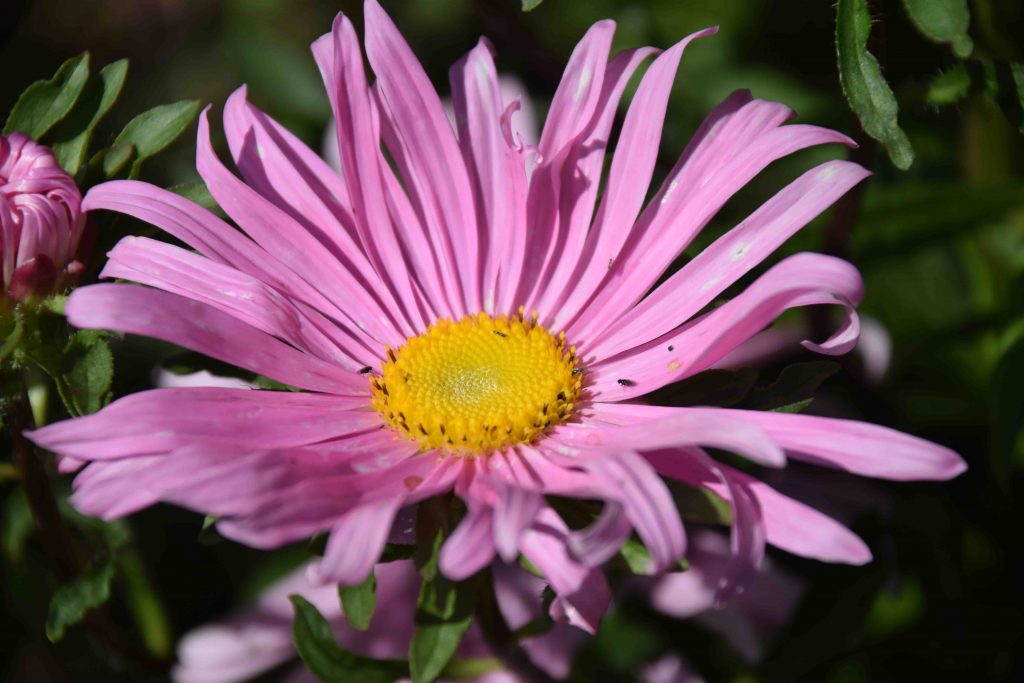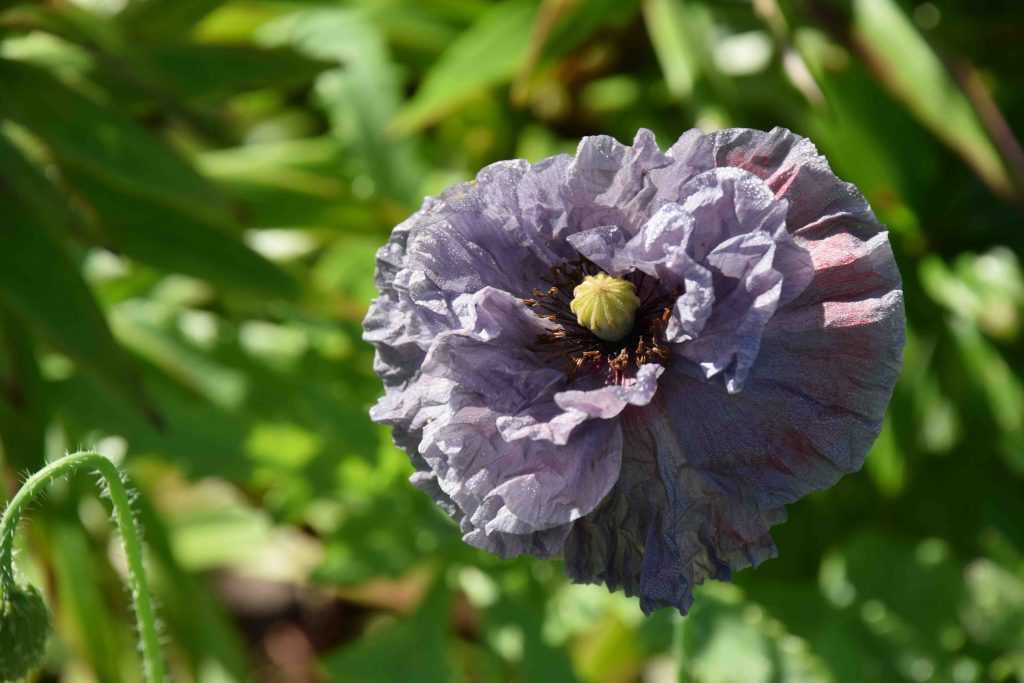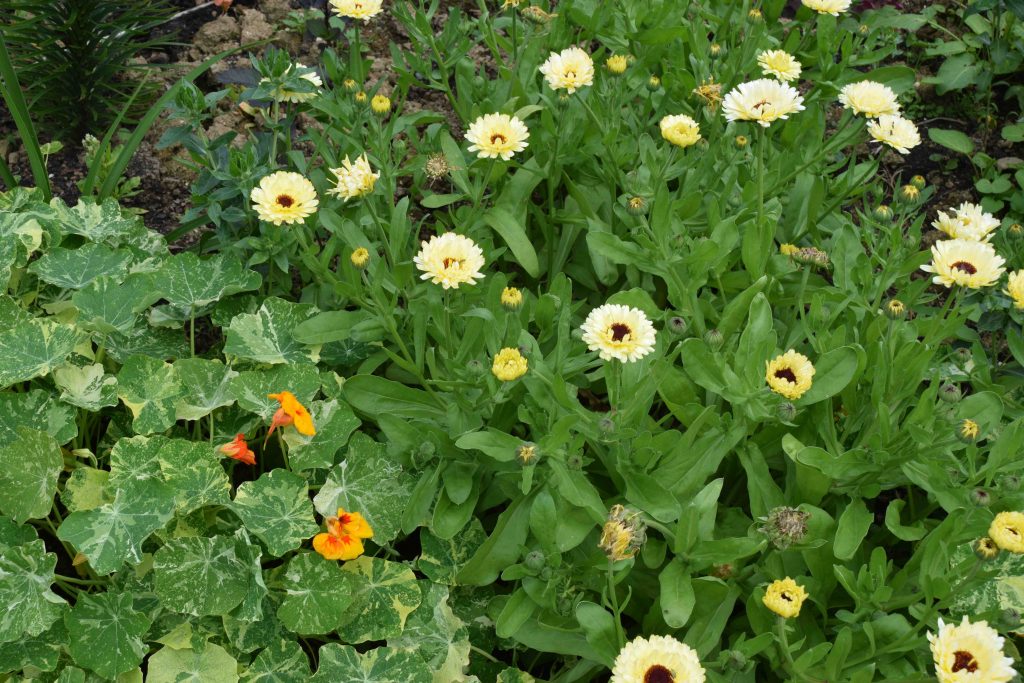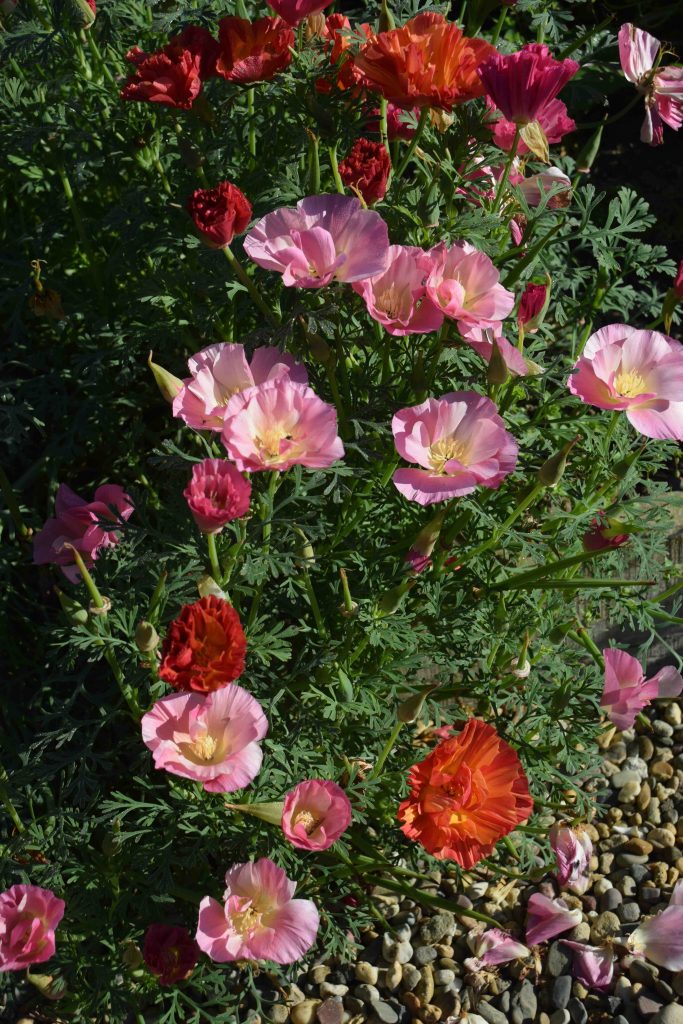
At the moment I am glad I went to the trouble of sowing annuals in spring. So many people say they like these bright and colourful flowers but they are too much work; needing to sow and plant out young seedlings and keep them protected from slugs till they bloom – and repeat the whole process next year.
I am afraid I can’t agree with this. I accept that they do need work but the fact that the process has to be repeated each year means you can grow something different every year. I certainly don’t want a garden that looks the same every year. And annuals are so cheerful and so easy to grow, I love the fact that they don’t flower all year – like strawberries and asparagus are all the better for being seasonal.

And annuals include some of the most beautiful of all flowers, from simple poppies and carefree calendulas to intricate nigellas. Hardy annuals, that withstand frost, can be sown in spring or autumn. Sowing in September does not suit them all but it does result in better plants in spring, with bigger roots and, as a result, more blooms, earlier blooms and a longer season of flowers.

Most are best sown direct where they are to bloom but if your soil is reluctant to become the ‘fine tilth’ mentioned in books and is resolutely ‘bricklike’ you can sow in cell trays and plant out seedlings. This is what I have had to do this year in my new garden that still has untamed soil.
An issue, that has to be addressed, is that some will self seed. This is not usually a problem and I welcome most, especially as they can fill in around perennials and even shrubs. The only one I get annoyed about is nasturtiums. The seeds are hardy and survive winter even though the lightest touch of frost will kill the plants. I have grown some this year (see photo above) but I know I will regret it next year when border space will be fuller and i wont want the wandering shoots thrusting everywhere. Calendulas also seed around but their seedlings are so easy to spot and pull out that I don’t mind. And I have never seen a calendula that I didn’t like, apart, perhaps, from the recent ‘Snow Princess’ which is supposed to be near white. I have tried it this year and it stretches my comprehension of ‘white’ a bit too far. And I can’t believe I am saying this, considering that I always rant about disliking dwarf varieties, but the plants are a bit ‘rangy’ considering the size of the flowers.

But, even so, I will be clearing patches in the border ready to sow some annuals in September to enjoy next summer.
Jobs for the week
Keep your crops harvested.
I just had to leave the garden for a few days and was amazed, though I should have expected it, that the round courgettes had turned from gold balls to footballs and the french beans from sowing needles to baseball bats! I am going to cut and compost some of the courgettes to reduce the stress on the plant so it will continue to produce more fruit. This is quite important because if allowed to mature a few fruits they will stop producing more.
Pick tomatoes as they ripen. Do not wash them until you are ready to eat them or the skins may split. Remove lower leaves from the plants if they turn yellow but do not cut them off to expose the fruits to the sun – it is warmth and not direct sun that causes tomatoes to ripen. Too much sun can cause the fruits to get ‘sun-burned’ shoulders which remain green even when the fruit is ripe. Keep feeding the plants once a week with a balanced feed because plants are still growing and swelling fruits.